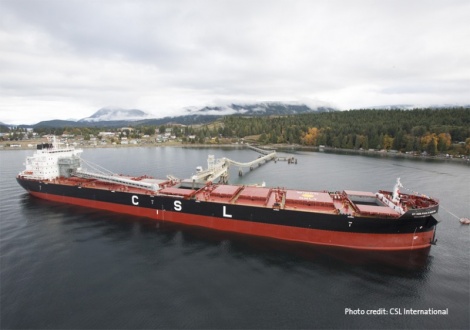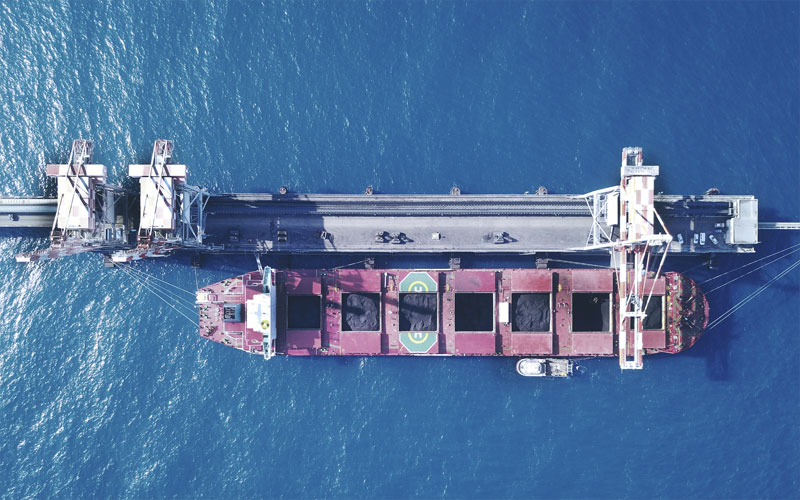The General Purpose and Use of Bulk Ships that travel by sea
There were many dangers involved in operating seagoing bulk carriers. The safety of seagoing bulk carriers is the subject of meticulous planning. This website serves as an easy reference for the international shipping industry and provides guidance and information about loading and discharge of bulk cargo kinds. These restrictions are established by the classification societies. It is essential to minimize the risk of stressing the structure of the ship and following all necessary safety precautions to ensure secure sea crossing. There are detail pages on our website which cover a variety of topics related to bulk carriers. These pages are beneficial both for passengers onboard as well as those on the shore in the terminal.
General characteristics of seagoing bulk carriers
Bulk carriers could be single deck vessels. They come with top-side tanks and side tanks that hoppers can use. These tanks are used in cargo areas. They are built to transport bulk solid cargo. Anything that isn't liquid or gas but solid bulk cargo, that is any material made up of mixture or granules, or any other material with a uniform composition. This material can be put directly into the cargo space of a ship and does not require any containment. Dry cargo can include sugar, bulk grains, and even minerals. In its broadest sense the term "bulk carrier" includes all vessels that are designed for the carriage of solid or liquid cargo in bulk form that is, for example, tankers. In the normal context, the term is generally used to refer to vessels that transport bulk cargos of solid goods including grains and other agricultural commodities in addition to mineral products such coal, ore, or stone for a few or one journeys. Click over to this
dry bulkers site for more.

What Exactly Is Bulk Carrier?
"A ship which is intended primarily to carry dry cargo in bulk, including such types as ore carriers and combination carriers"
Carrier Capacity that ranges from 3,000 to 300,000 tonnes
Average speed of 1215 knots
-Single deck ships, ie no tweendecks
Carriers with medium to small size bulk (carrying capacity between 40 to 60,000 tonnes) typically have equipment for handling cargo. However larger vessels may use facilities on shore to load or unload.
-The cargo holds are usually big, with no obstructions. They also have bigger hatches to facilitate easy loading/unloading of cargoes
The bulk carriers typically have one cargo hold that is designated as an ballast hold. This is a possibility to use for ballast voyages to increase stability. Some additional holds could be permitted for partial ballasting, however only in port
They are equipped with hydraulic, single pull or stacking (piggy- back) type steel hatch covers
Quatre ballast tanks are the most common types.
Sloping topside wing tanks
Tanks with a sloping bottom
Double bottom tanks
Peak and after peak water tanks.
What is a solid bulk cargo? Solid bulk cargo is any material that is not gas or liquids composed of grains, particles, or larger pieces that can be loaded directly into cargo area without the need for extra containment. Bulk carriers can carry diverse cargoes comprising "clean" food items and "dirty", minerals, in addition to cargoes that could interact with each other or other contaminants, such as water. It is crucial to make sure that the areas for cargo are properly prepared for each cargo. Cleaning must be adequate for the item to be loaded. It typically, a surveyor is required to determine if the space is suitable to load. To prevent contamination, it is essential to remove any residues from previous cargo. Damage to bulk cargoes is mainly caused by water. Therefore it is essential that not only the holdings be dry to receive cargo but hatch covers should be watertight or, if necessary closed to stop the ingress of water. All fittings in the hold (ladders pipe guards, ladders and bilge pipes.) should be inspected. You should inspect every fitting inside the hold (ladders,pipe guards,bilge covers...) to ensure that they're in good working order. They could cause damages to conveyor belts, which can create delays. The ship could be held responsible if these items are accidentally discharged with cargo. Have a look at this
dry cargo chartering url for more.

Bulk Carrier, Bulker This vessel is intended to carry dry cargo. The traditional bulk carrier has only a single deck and skin. Bulk carriers are made to hold with the highest deadweight of bulk cargo of any kind including heavy ore and lighter grain . It's not as simple or simple as you think.
Gearless Bulk Carrier
A lot of bulk cargoes may have dangerous properties or change their properties while in transport. Unintentional loading can result in damage to a ship. It is possible for a ship to bow when it is not properly loaded. This can cause the vessel to stress. If the weather is bad it can lead to dangerous problems on the sea. Other cargoes may also be affected by residuals from prior cargoes. Certain bulk cargoes could suffer water damage. cement power. It is difficult to verify the quantities and weights of cargoes that are loaded and unloaded. These aspects have significant implications on the operations of bulk cargoes. Discharging bulk cargo using? bulk cargoes may create a cone when loaded on conveyor belts. This angle is known as the "angle of repose" and it varies depending on each cargo. Iron ore cargoes, on the other hand, form an angle that is steeply-angled. Cargoes that flow free will form shallower cones. Low angles of repose can result in cargo shifting in transit. When the cargo is nearing its completion, bulldozers could be required to spread the load across the storage areas. Dry-bulk carriers generally use docks on the shore for cargo loading or discharge Certain bulk carriers have self-unloading capabilities with conveyors beneath the cargo holds or cranes in decks.



